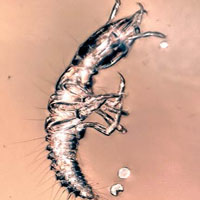Challenges for understanding lacewings: how to deal with the incomplete data from extant and fossil larvae of Nevrorthidae? (Neuroptera)
DOI:
https://doi.org/10.13133/2284-4880/472Keywords:
Neuroptera, diversity, larva, pupa, post-embryonic developmentAbstract
Within Neuroptera, the group of lacewings, the ingroup Nevrorthidae is special in several aspects: 1) the group may represent the sister group to all other neuropterans; 2) the group is quite species-poor with only 19 extant species known so far; 3) its representatives show a disjunct relict distribution; 4) it has very unusual appearing larvae. These larvae are very elongate, almost worm-shaped. Our overall knowledge of these larval forms is still very limited. We here review all known occurrences of extant larvae, amended by fossil larvae, all preserved in amber. So far there have been only 17 extant larval specimens of Nevrorthidae depicted in the literature. We also present new fossil larvae, with this reaching a total number of 16 known fossil larvae of Nevrorthidae. When plotting measured lengths, larvae cluster into more than three clusters. Also reconstructed size gains between these clusters indicate that Nevrorthidae might in fact develop through more than three larval stages, unlike other lacewings. A special subdivision of the trunk segments observed in many larvae indicates a specialisation for moving in confined spaces. Comparison of syn-inclusions and literature data make it likely that not all larvae lived in running waters, as previously assumed. Overall our knowledge remains rather limited, yet the data allow to draw some new conclusions about the life and evolution of these larval forms.
Downloads





